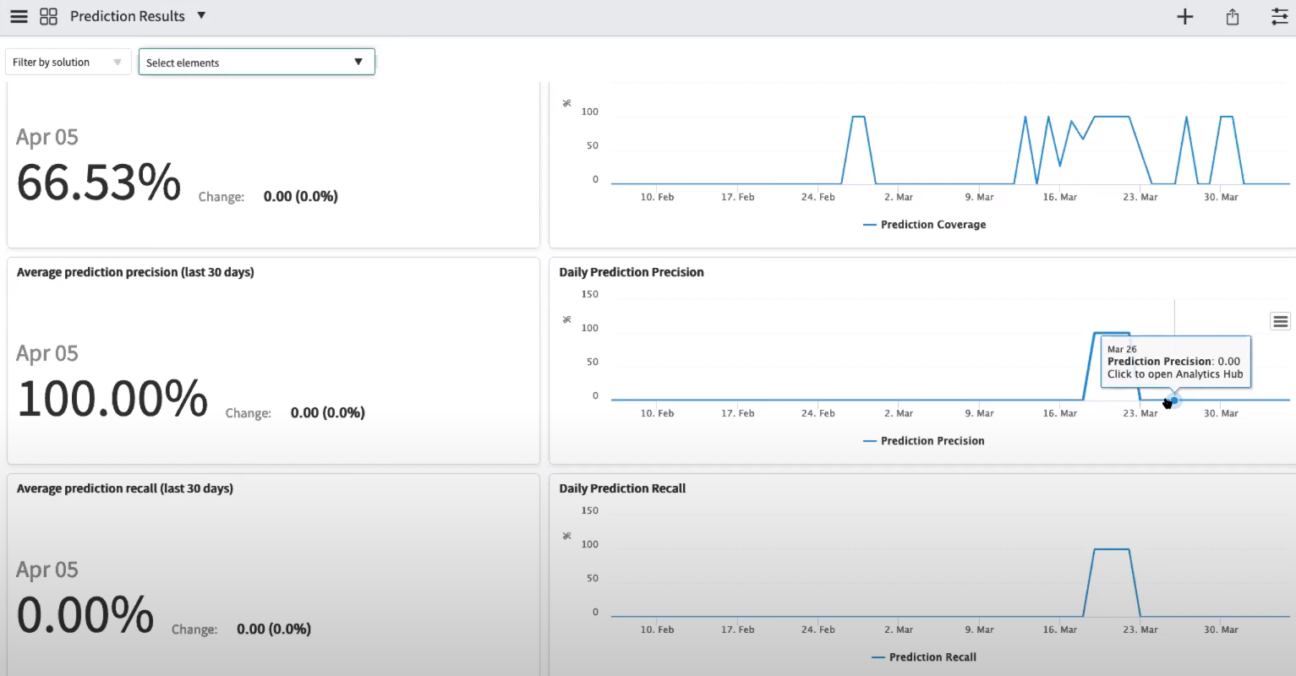It is 2023 and everyone around you is talking about the marvels of AI to the point where you don’t want to listen anymore. But you should. ServiceNow provides its customers with its own machine learning solution called Predictive Intelligence, which consists of several separate frameworks. This article has for you some of the “Do’s and Don’ts” about ServiceNow’s Predictive Intelligence – Classification framework, based on the experience we got from implementing it for our customers.
What is the Classification framework?
It is used to solve the most common use cases which are speeding up the categorisation and routing of tickets by predicting field values based on user input – most commonly just a free text description.

For example:
Use case: The user creates a new Incident and is prompted to describe the issue and then provide the urgency.
The problem: The issues will most likely be submitted with higher urgency and that triggers shorter Response SLAs and may increase the stress in the team. After the initial assessment of the issue, the urgency is often lowered to the one that better depicts the real urgency.
The solution: Implement prediction of urgency based on the text input from the user, which should provide more accurate values, without the need for the SD agent’s input. This way work can be prioritised objectively.
Now that you know what is the Classification framework, let’s have a look at the “Do’s and Don’ts”.
Don’t be afraid and embrace it heads on
It is very common that we are afraid of things that we don’t know or don’t understand. Predictive Intelligence has been around for some time now and you definitely aren’t in the shoes of a pioneer. We have been using and implementing it for some time and can definitely see its added value but also its limitations.
Don’t let the train leave the station
Sooner or later every company will adopt some kind of AI-assisted tool to help speed up and automate internal processes. Implementing any machine learning, chatbot or predictive solution will take time. Not only to implement but also to finetune and really adopt it. Many of the solutions require plenty of historical data and cannot be implemented immediately. Early adopters will definitely have an advantage over late adopters who have yet to go through the journey.
Don’t try to predict uncertain results
The prediction feature works great at predicting values but there is one main limitation – the prediction of a finite array of predefined values. What does it mean? It means that you cannot predict something that doesn’t exist such as predicting “Resolution Notes” based on a description. But what you can predict is the “Resolution Code”.
Another factor that affects the accuracy is the number of predictable values. To provide an example – it is more accurate to predict the Assignment group if you only have 30, than trying to predict one from 500 different groups. Even though the amount of predictable values is not limited, we don’t recommend it for cases where you have too many possible results. Always double-check with an expert if your use case is feasible.
Don’t let it go without supervision
You wouldn’t let your employees go without any supervision either, would you? Even after the fine-tuning phase, you should incorporate regular review activities where you monitor the performance of the solution and act accordingly. ServiceNow Predictive Intelligence provides a set of dashboards that display the most important indicators for you to monitor prediction accuracy & results and react to them. It is very likely that you will need to do several iterations before you end with a satisfying final solution.

Do start with a POC
Before you start running, you should learn how to walk. The same applies here. You need to start with simple use cases, such as predicting the Urgency or selecting the correct Category. If you are still not sure whether it will work for your organisation or not, defining a POC with one or two simple use cases is the best way to go. ServiceNow made it very easy to enhance and scale the solution and provided a user-friendly console for its fine-tuning.
Do align your expectations with reality
AI is the future and it’s great. AI will save you money. AI will fasten your processes. Is all of this true? Yes and no.
We’ve all been there – an anticipated movie, game or book is coming out and all you hear is how great it is. But once it comes out you find out that it was all just hype. We definitely recommend you do your own research or discuss it with an expert to understand how it works. It will definitely help with setting realistic expectations and drafting achievable goals.

Do use your Professional subscriptions to the fullest
If you already have ServiceNow Professional, leverage all available platform capabilities to maximise its added value. A good Predictive solution may not only save you money but can optimise and fasten your processes to improve the overall user experience in your organisation. If you don’t know where to start, you can use simple predefined solutions such as predicting the Assignment group, Category, Service or Configuration Item. And don’t stop there, because Classification is only one of the available frameworks you can use.
Do check data quality and perform a data cleanup
It’s no secret that the quality of data is one of the most important things when you start working with Predictive Intelligence. To train any prediction solution you need to use sample or historical data and if you want the prediction to be accurate, you must ensure that the sample data is correct.
This is why it is a “must” to check and perform a cleanup of the sample data prior to using it for training. It has a direct impact on the prediction accuracy in the early phase and can have a huge impact on how you or others perceive it.
—–
We hope that this article will help you decide to go forth with your implementation of Predictive Intelligence. We would be more than happy to discuss your use cases and guide you through your journey. Just reach out.
